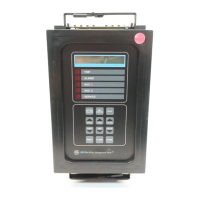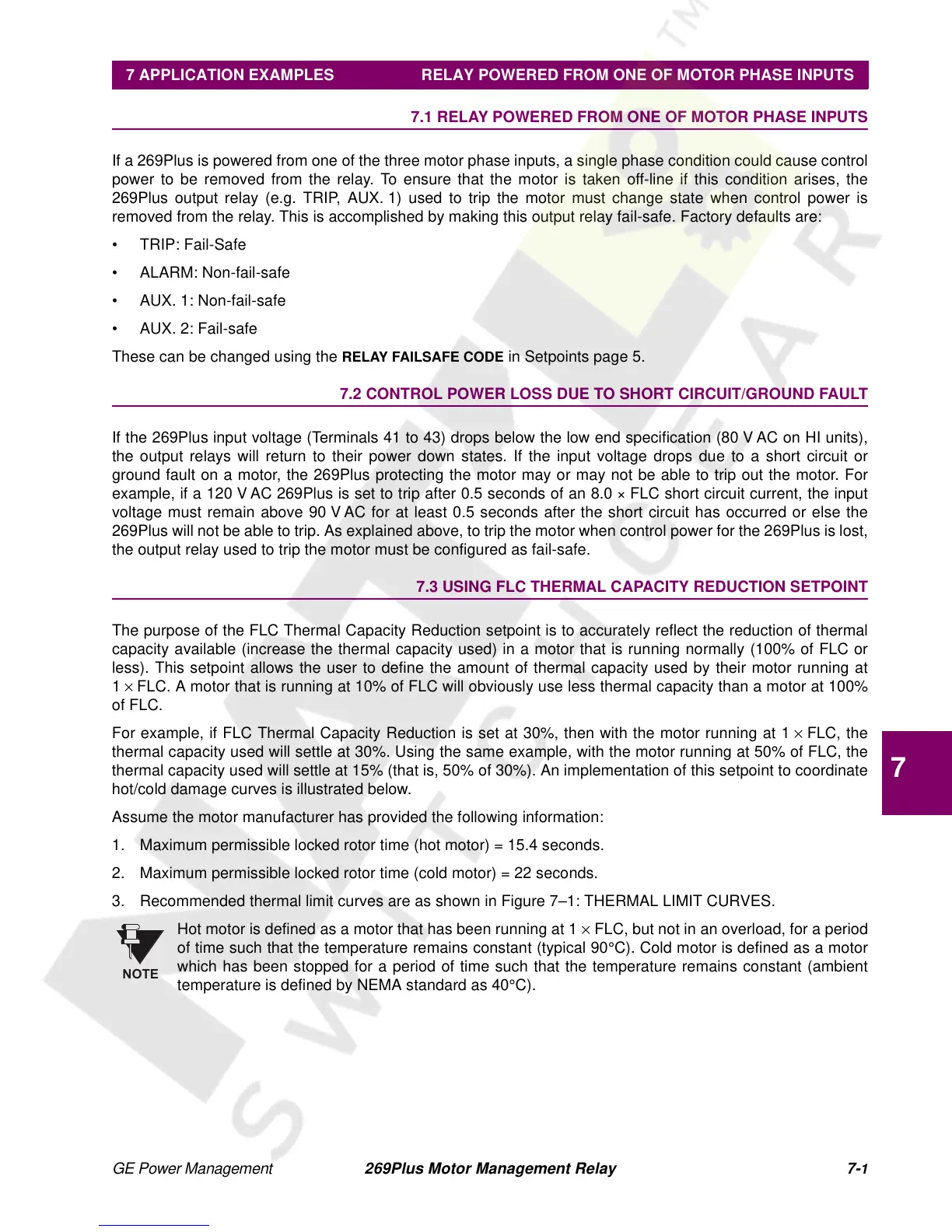GE Power Management 269Plus Motor Management Relay 7-
1
7 APPLICATION EXAMPLES RELAY POWERED FROM ONE OF MOTOR PHASE INPUTS
7
269 RELAY 7 APPLICATION EXAMPLES 7.1 RELAY POWERED FROM ONE OF MOTOR PHASE INPUTS
If a 269Plus is powered from one of the three motor phase inputs, a single phase condition could cause control
power to be removed from the relay. To ensure that the motor is taken off-line if this condition arises, the
269Plus output relay (e.g. TRIP, AUX. 1) used to trip the motor must change state when control power is
removed from the relay. This is accomplished by making this output relay fail-safe. Factory defaults are:
•TRIP:Fail-Safe
• ALARM: Non-fail-safe
• AUX.1:Non-fail-safe
• AUX.2:Fail-safe
These can be changed using the
RELAY FAILSAFE CODE in Setpoints page 5.
7.2 CONTROL POWER LOSS DUE TO SHORT CIRCUIT/GROUND FAULT
If the 269Plus input voltage (Terminals 41 to 43) drops below the low end specification (80 V AC on HI units),
the output relays will return to their power down states. If the input voltage drops due to a short circuit or
ground fault on a motor, the 269Plus protecting the motor may or may not be able to trip out the motor. For
example, if a 120 V AC 269Plus is set to trip after 0.5 seconds of an 8.0 × FLC short circuit current, the input
voltage must remain above 90 V AC for at least 0.5 seconds after the short circuit has occurred or else the
269Plus will not be able to trip. As explained above, to trip the motor when control power for the 269Plus is lost,
the output relay used to trip the motor must be configured as fail-safe.
7.3 USING FLC THERMAL CAPACITY REDUCTION SETPOINT
The purpose of the FLC Thermal Capacity Reduction setpoint is to accurately reflect the reduction of thermal
capacity available (increase the thermal capacity used) in a motor that is running normally (100% of FLC or
less). This setpoint allows the user to define the amount of thermal capacity used by their motor running at
1 × FLC. A motor that is running at 10% of FLC will obviously use less thermal capacity than a motor at 100%
of FLC.
For example, if FLC Thermal Capacity Reduction is set at 30%, then with the motor running at 1 × FLC, the
thermal capacity used will settle at 30%. Using the same example, with the motor running at 50% of FLC, the
thermal capacity used will settle at 15% (that is, 50% of 30%). An implementation of this setpoint to coordinate
hot/cold damage curves is illustrated below.
Assume the motor manufacturer has provided the following information:
1. Maximum permissible locked rotor time (hot motor) = 15.4 seconds.
2. Maximum permissible locked rotor time (cold motor) = 22 seconds.
3. Recommended thermal limit curves are as shown in Figure 7–1: THERMAL LIMIT CURVES.
Hot motor is defined as a motor that has been running at 1 × FLC, but not in an overload, for a period
of time such that the temperature remains constant (typical 90°C). Cold motor is defined as a motor
which has been stopped for a period of time such that the temperature remains constant (ambient
temperature is defined by NEMA standard as 40°C).
NOTE

